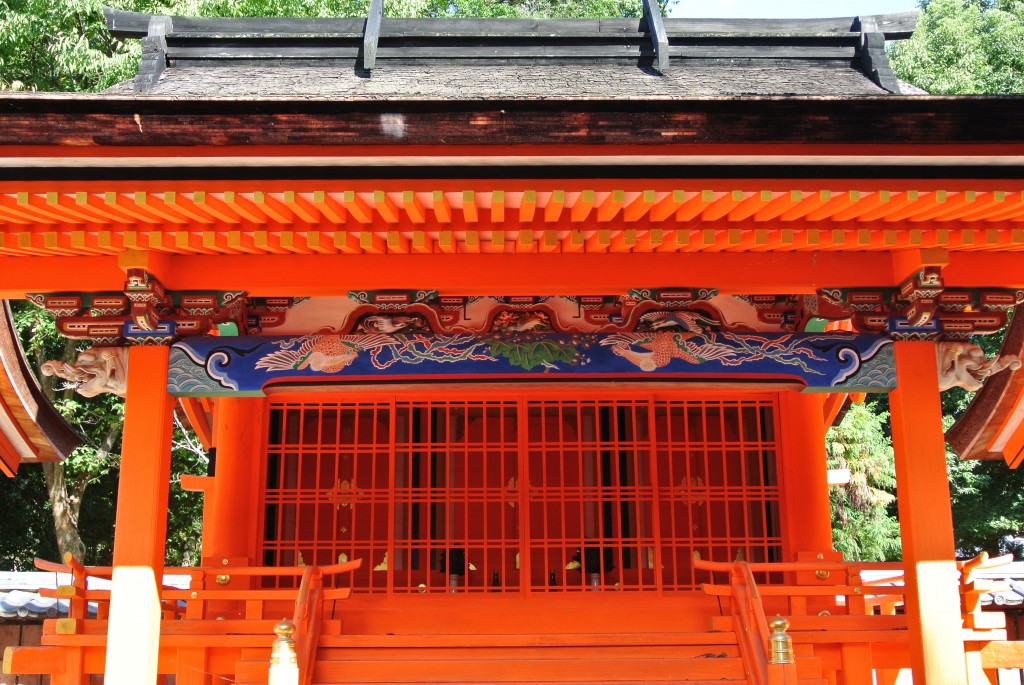
The gorgeous Shinto shrine at the Buddhist temple of Ninna-ji
Yesterday I happened to explore the north-west corner of Kyoto, in which are located three World Heritage Sites, all of which are Buddhist temples in one form or another. The Golden Pavilion is world famous for its exquisite beauty and for its portrayal in the novel by Mishima Yukio. Ryoan-ji contains the most celebrated ‘dry stone garden’ in the world. And Ninna-ji, the least well-known of the trio, combines aristocratic aesthetics with a Buddhist sensibility through the conversion of a retired emperor’s villa.
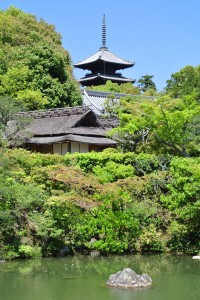
A Buddhist pagoda rises behind the aesthetics of a converted aristocratic villa at Ninna-ji
Readers of this blog will not be surprised to learn that each of the three Buddhist complexes contains a small Shinto shrine. In the case of Ninna-ji this is to be expected, since it belongs to the Shingon sect of Buddhism which has integrated kami worship since its very foundation in the eighth century. But both the Golden Pavilion and Ryoan-ji belong to the Zen school of Buddhism, traditionally held to be more sceptical in terms of other-worldly deities.
The most magnificent and biggest of the Buddhist-Shinto shrines (see above) is that at Ninna-ji, which has a Momoyama-era ostentation (1573-1598). ‘Kusho Myojin is a building which protects Ninna-ji’s most important Garan,’ says a noticeboard (Garan is a sanctified place where Buddhist monks perform ascetic trainings).
The shrine consists of three small buildings, erected between 1641-44, enshrining nine Myojin or syncretic kami. In front of them stand three stone lanterns carved in a distinctive style by the tea ceremony master, Oribe Furuta (1544-1615). The overall effect is striking, standing as the complex does in the shadow of the pagoda at the heart of the temple. Put it together with the other treasures of the temple, such as the magnificent converted palace of a retired emperor, and you can see why Ninna-ji is worthy of World Heritage status.
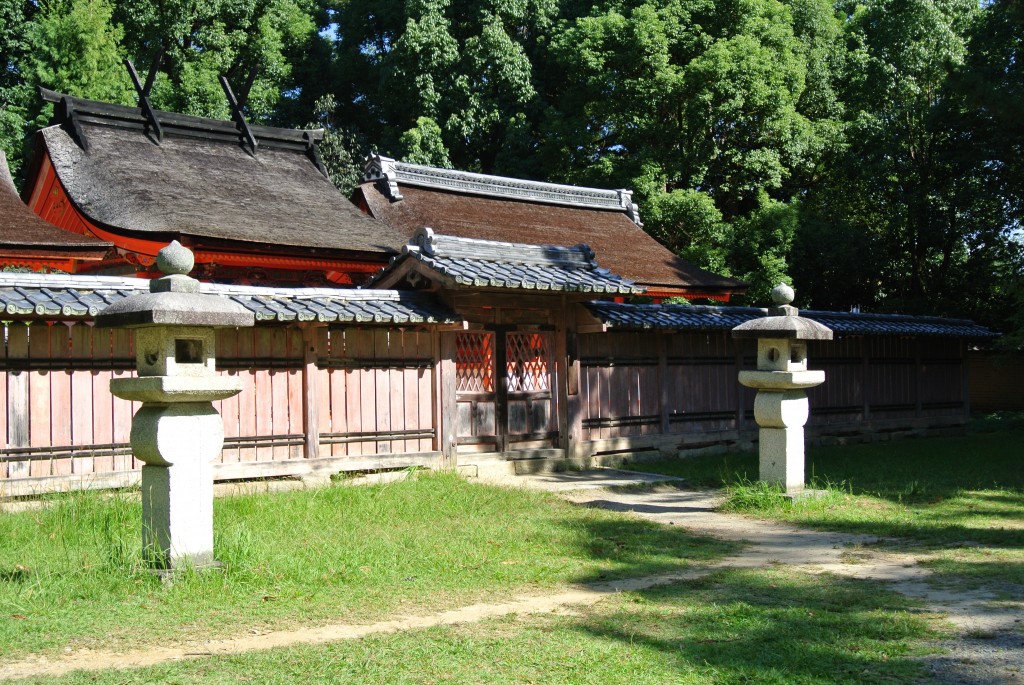
View of the Kusho Myojin shrine at Ninna-ji with stone lanterns carved by Oribe Furuta
At Ryoan-ji is an alluring Benten Island, which lies in a most attractive lake. We tend to think of Ryoan-ji only in terms of its famous rock garden, but the grounds are superb too with moss-strewn rocks set amongst gnarled roots beneath a green canopy. The lake is covered with lotus, and its tree-lined shore set against a ‘borrowed landscape’ of the mountains behind.
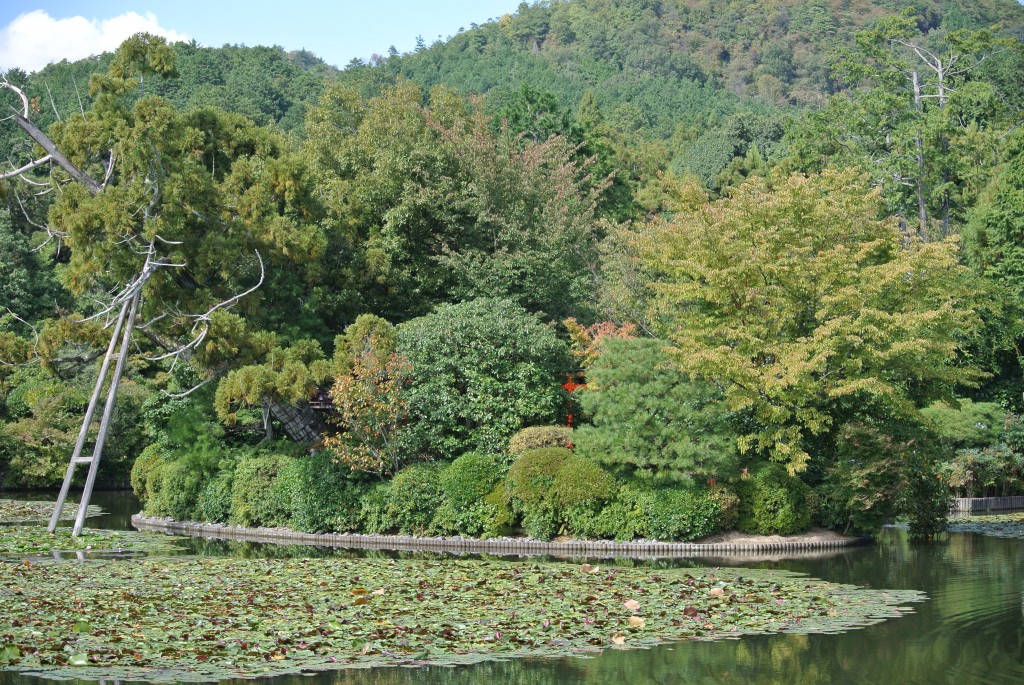
The lake at Ryoanji with just a glimpse of the red torii of the Benten shrine
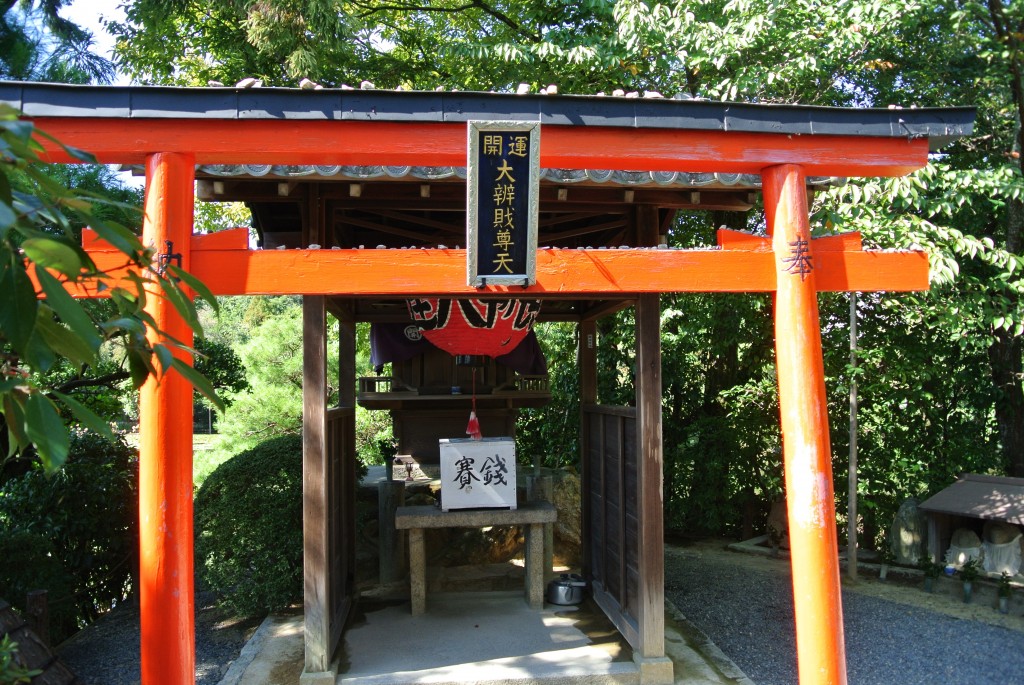
Benten shrine in Ryoanji’s garden. Notice the small stones put on the crossbeams of the torii by visitors hoping they will help to make their wishes come true.
The only female among the Lucky Seven Gods, Benten is a syncretic goddess associated with watery depths and creative artistry. White snakes coil themselves around her, ready to act at her bidding. A lute-playing Muse, she strums seductively at the water’s edge and is often found, as here, on small islands and inlets. No doubt she inspires disturbing visions in the meditative minds of the Zen monks over whom she presides, like the rocks that protrude in the oceans of eternity in the dry stone garden at the heart of the temple.
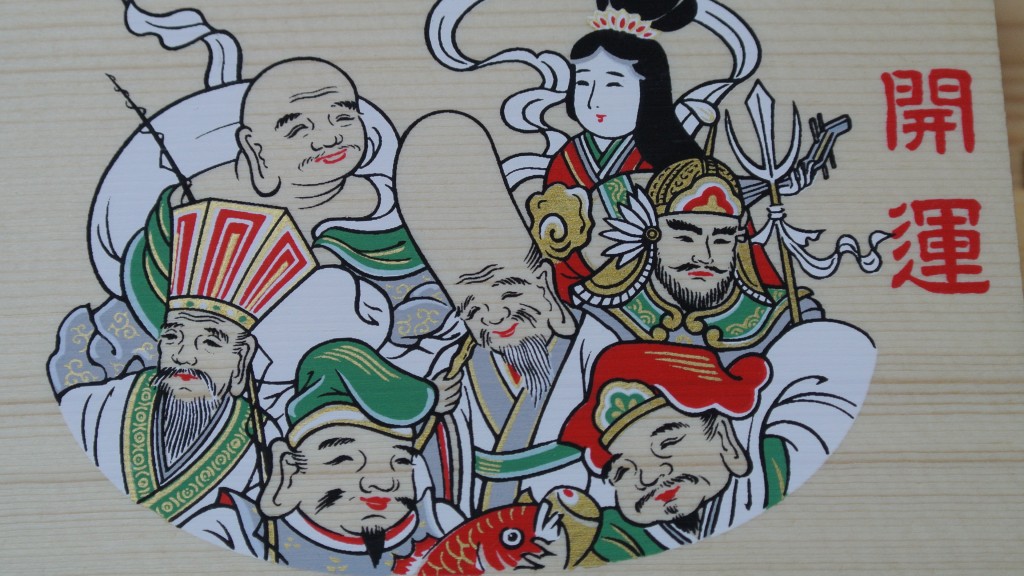
Seven Lucky Gods featuring Benten at the back as the sole female
The Temple of the Golden Pavilion (known in Japanese as Kinkaku-ji) has the smallest shrine of the three World Heritage Sites. Most visitors are so dazzled by the brilliance of the main building as it glistens reflectively in the pond before it that they overlook altogether the little shrine by the exit gate. A notice explains that it’s dedicated to Dakiniten, which since the Medieval Period has been conflated with the popular figure of Inari (here described as an omnipotent god of prosperity).
The noticeboard gives the Sanskrit name for Daikini, for the deity is said to have Hindu and Buddhist origins in India. The most famous case of Daikini worship is a Soto Zen temple called Toyokawa Inari in Aichi Prefecture. It’s said that one of its head priests had a vision in 1267 of a figure on a white fox, named as Daikiniten but conflated in the popular imagination with Inari. At least that’s what the temple claims, for in her book The Fox and the Jewel Karen Smyers shows how Meiji-era Buddhists worshipping Inari had to adopt complicated strategies and invented traditions in order to justify worship of a kami in a buddhist complex.
By claiming Daikini as a boddhisattva and an imported deity, in contrast to the native Inari, the priests were able to maintain their status as Buddhists rather than being forced by government ideologues into becoming Shinto. It may explain why here at the Golden Pavilion what appears to be an Inari shrine is treated as a Buddhist deity and a notice put up to explain its Indian origins.
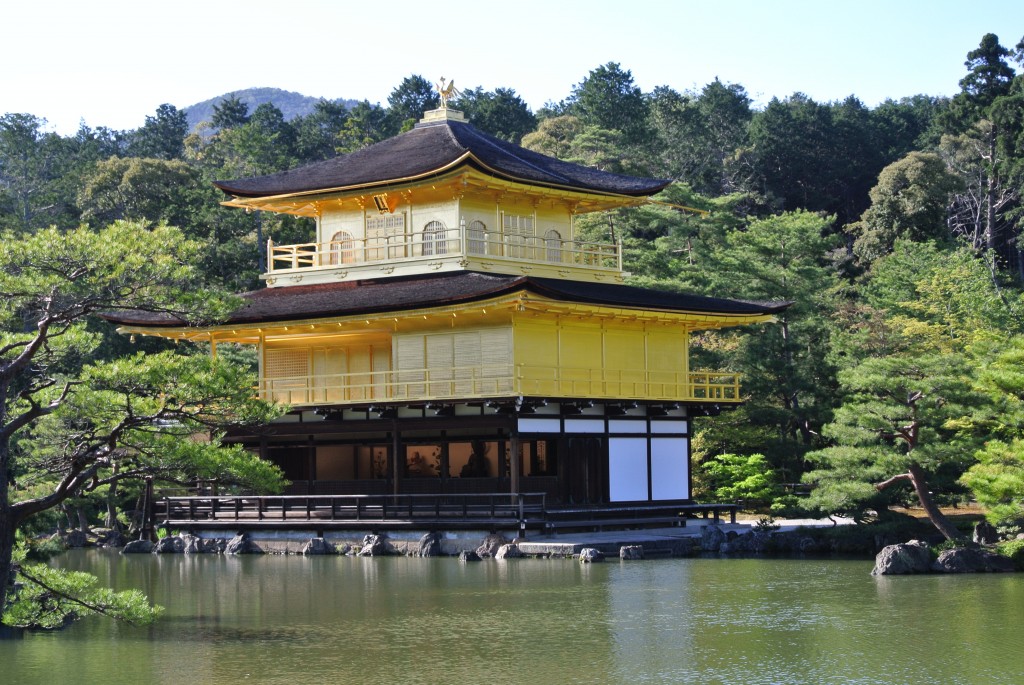
A dazzling Golden Pavilion, part of a Zen Buddhist temple
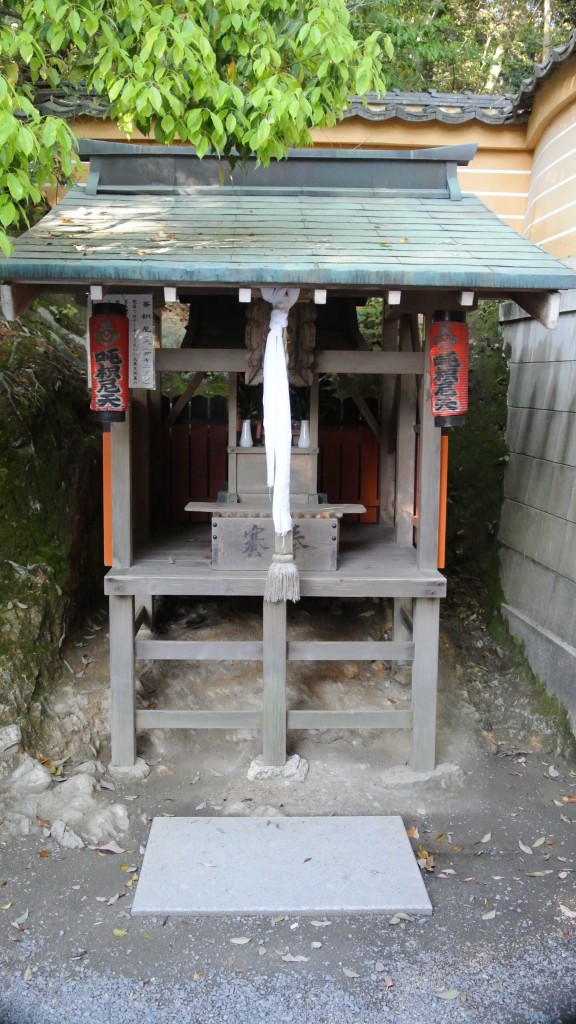
The overlooked small shrine at the Kinkakuji exit

I agree, I too think Ninna-ji one of my local faves. You know of course about the 88 temple hiking course in the hills above?
Hi Ted, and thanks for writing in. Indeed I know of the 88 temple mini-course behind Ninna-ji and have walked it once. I reckon it saves me from having to do the real one at Shikoku.
What do you think?
Yeah, I’ve done it a few times. Fewer buses than on the Shikoku one.